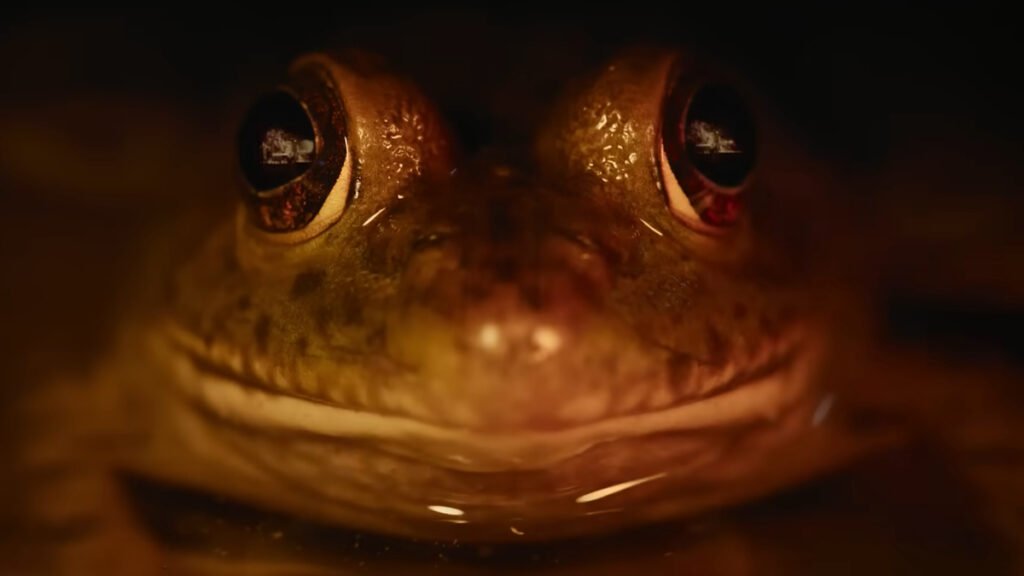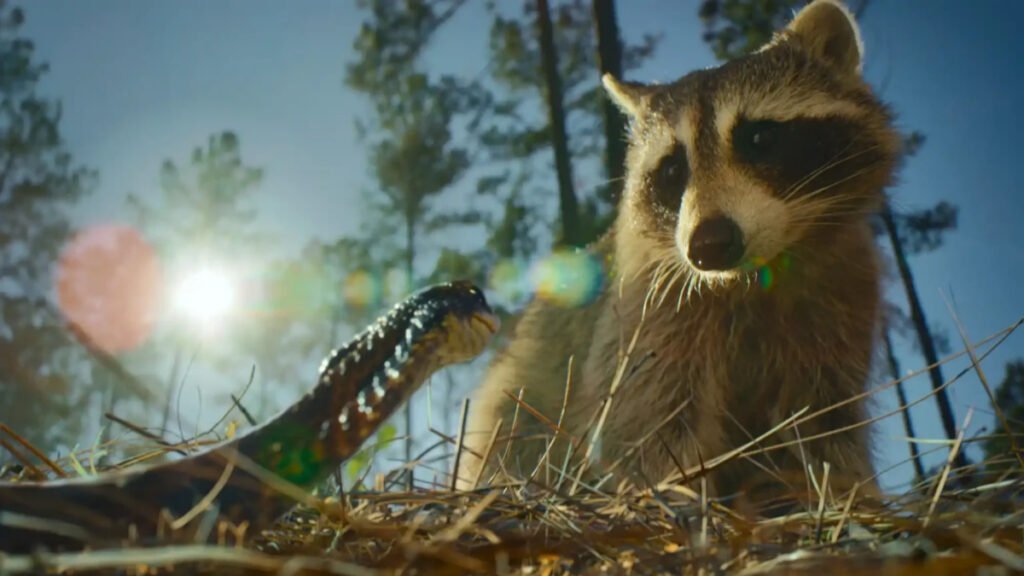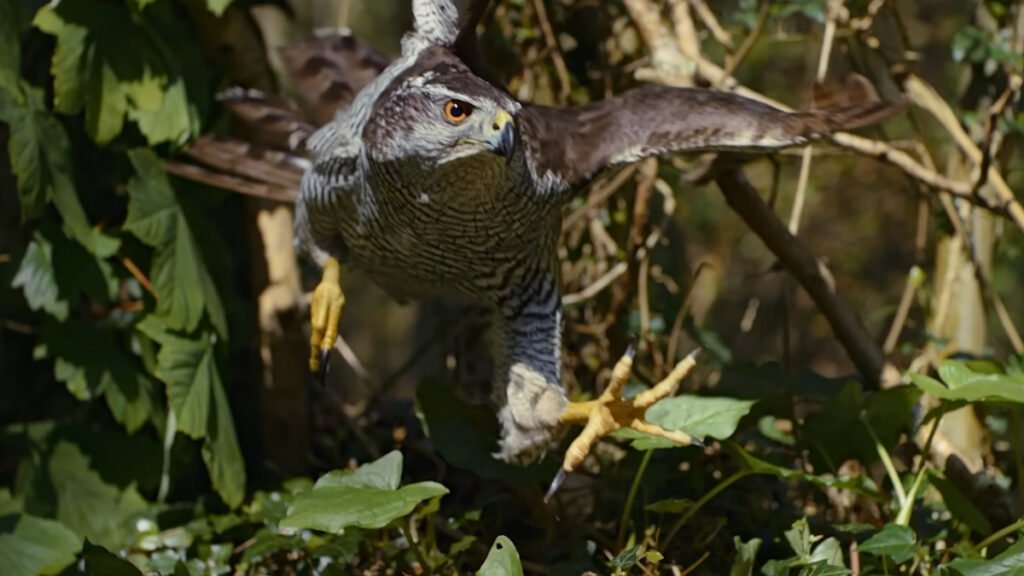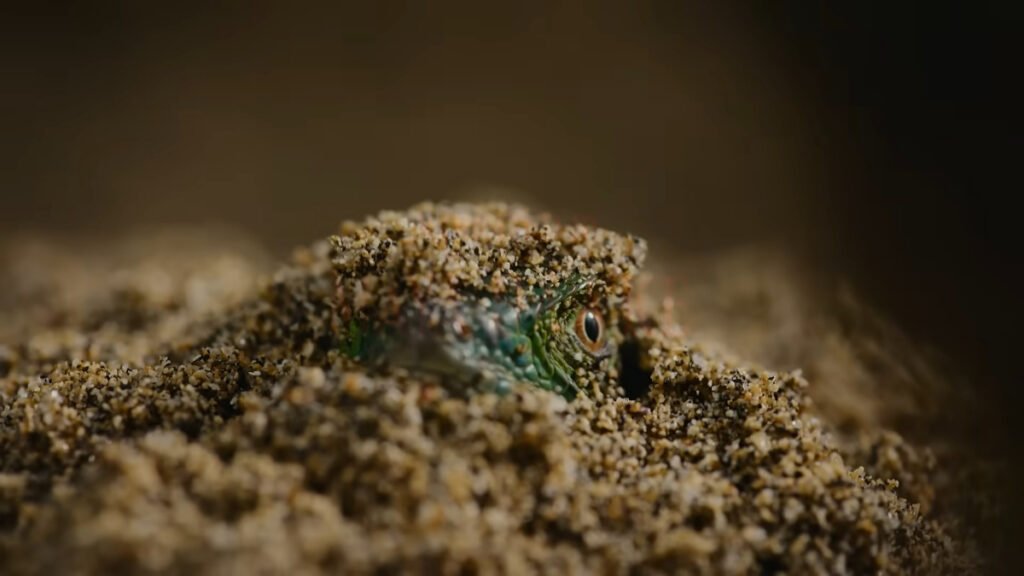Nightmares of Nature Review

Director: Nathan Small
Date Created: 2025-09-30 21:25
4
Nightmares of Nature Review: This is no typical wildlife documentary. Directed by Nathan Small and created by Blumhouse Television in collaboration with Plimsoll Productions, it is edited to cinematic standards and narrated by Maya Hawke, whose voice imbues it with a feeling of charm as much as horror. Season 1 consists of three adequately plotted episodes, and all of these are framed as horror films but are based on real-life fights of animals in their natural habitats. What is distinctive about this Netflix docuseries is that it pairs natural history with a thriller lexicon so that even quotidian animals and daily survival fights are a thriller.
Nightmares of Nature Review
I didn’t really know how to approach this docuseries. I’ve seen plenty of nature specials that glide in awe of lions, whales, or eagles. Nightmares of Nature documentary shifts focus away from animals that are often spotlighted. The result is surprising, at times creepy, yet intriguingly mesmerising. The further that I watched, the clearer it became that this is no typical nature documentary — it is an emotional rollercoaster that blurs fact and fright.
What I most enjoyed about Netflix’s Nightmares of Nature is how new it is. Rather than going big on faraway scenery and majestic herds of animals, it zooms in tight on tiny species that we might otherwise overlook. Their dramas play out like horror films, complete with brooding lighting, snappy cutting, and score work that makes every snap feel like menace just around the corner. Sometimes I found myself holding my breath to see what would come next.

This is a series that allows viewers to experience it as if they are part of the animals themselves rather than observing them as lab animals, as many a programme does. We experience their dilemmas and their choices as opposed to getting some detached explanation as if it is happening to someone else. This is immersive storytelling of the highest order, and that is why this Netflix docuseries is so special.
Much of its effectiveness is Maya Hawke’s narration. She doesn’t narrate what occurs; she establishes mood. Sometimes it’s fun and comforting-tinged, but instantly it might shift to a creepy and direct tone. This blending of warmth and threat sustains tension without overwhelming the listener. It felt as if she took me into a spooky forest and cautioned me that each shadow is concealing a real-life threat.

From a production perspective, Nightmares of Nature series is a visual treat. You’d expect to see techniques such as close-ups to create tension, contrast of light and darkness to create drama, and quick juxtaposition that feels like a jump scare in a horror movie. At first, I wondered if it would come off as cheesy or done to excess, but it didn’t. Those creative indulgences actually made the perils of the wilderness all the more believable. When it comes to nature, it is brutal, and that horror approach only serves to drive that point home.
One of the aspects that appealed to me is that the show did away with human appearance on camera. Humans are indeed represented indirectly – through shadows, voices, or traps. It is a brilliant device to make us aware of that wordless yet efficacious input of humans to animals’ survival that is so frequently provided without appearing physically present.

While it might appear to be a horror TV series, Nightmares of Nature documentary never forgets its roots: a teaching program. Between the scary moments of tension, the show breaks in interesting facts about ecosystems, prey and predators, and survival mechanisms. These asides do not break the tension but actually build upon it, reminding us that, to our eyes, what is horror is merely daily existence to these creatures.
Where most shows come forth touting big predators as good guardians of life, this show teaches us why small life is valuable. Their narratives depict delicate ecosystem balances so that all life, no matter how small it may be, is valuable. That is something to remember.
This show was a breath of fresh life to me because it did something so rare: it broke its own mould. You’ve got a risk of getting stale with documentaries about nature, but Netflix’s Nightmares of Nature is new, innovative, and a blast to watch. It is anything but perfect – a dramatisation will chime sometimes as a bit staged, and most episodes are just a mite short and barely scratch their subjects. But those negatives are minor compared to how much oomph this show has.

Blending reality and the vocabulary of fear, it makes us deeply invested in creatures we would otherwise turn a blind eye to. It makes a small struggle of theirs an epic survival story, and that emotional investment is what lingered long after it ended.
Netflix Nightmares of Nature Review: Summing Up
Overall, I would conclude that Nightmares of Nature docuseries is a chilling as well as enlightening show. It defies what a wildlife documentary is capable of, producing something that is simultaneously instructive as well as cinematic. By blending horror-type cinematography, acute narration, as well as an untraditional approach to storytelling, it is definitely among Netflix’s most distinctive offerings of the past years. It’s innovative, exhilarating, and cerebral – a documentary that will entertain as much as it informs you about nature soap operas.
